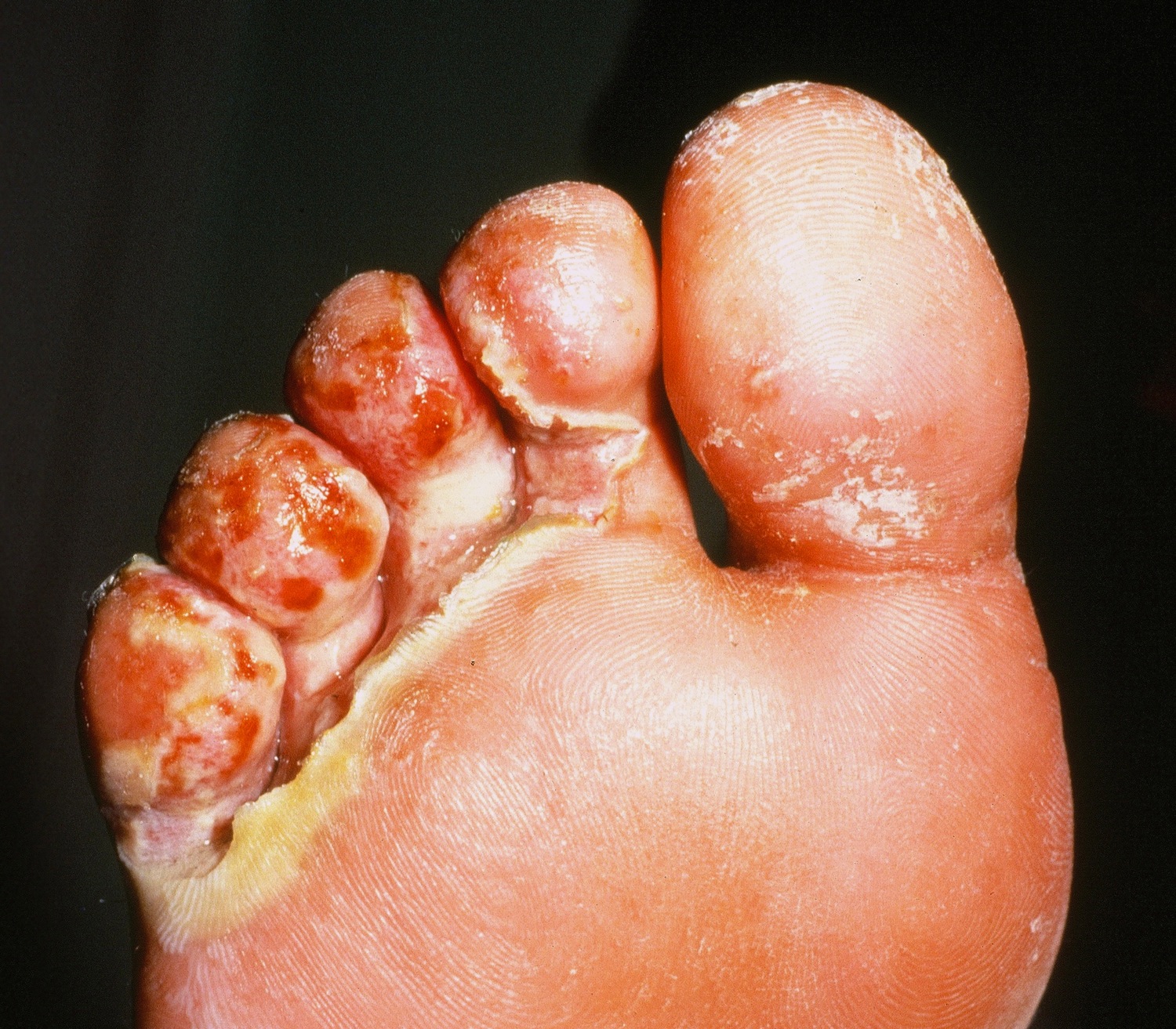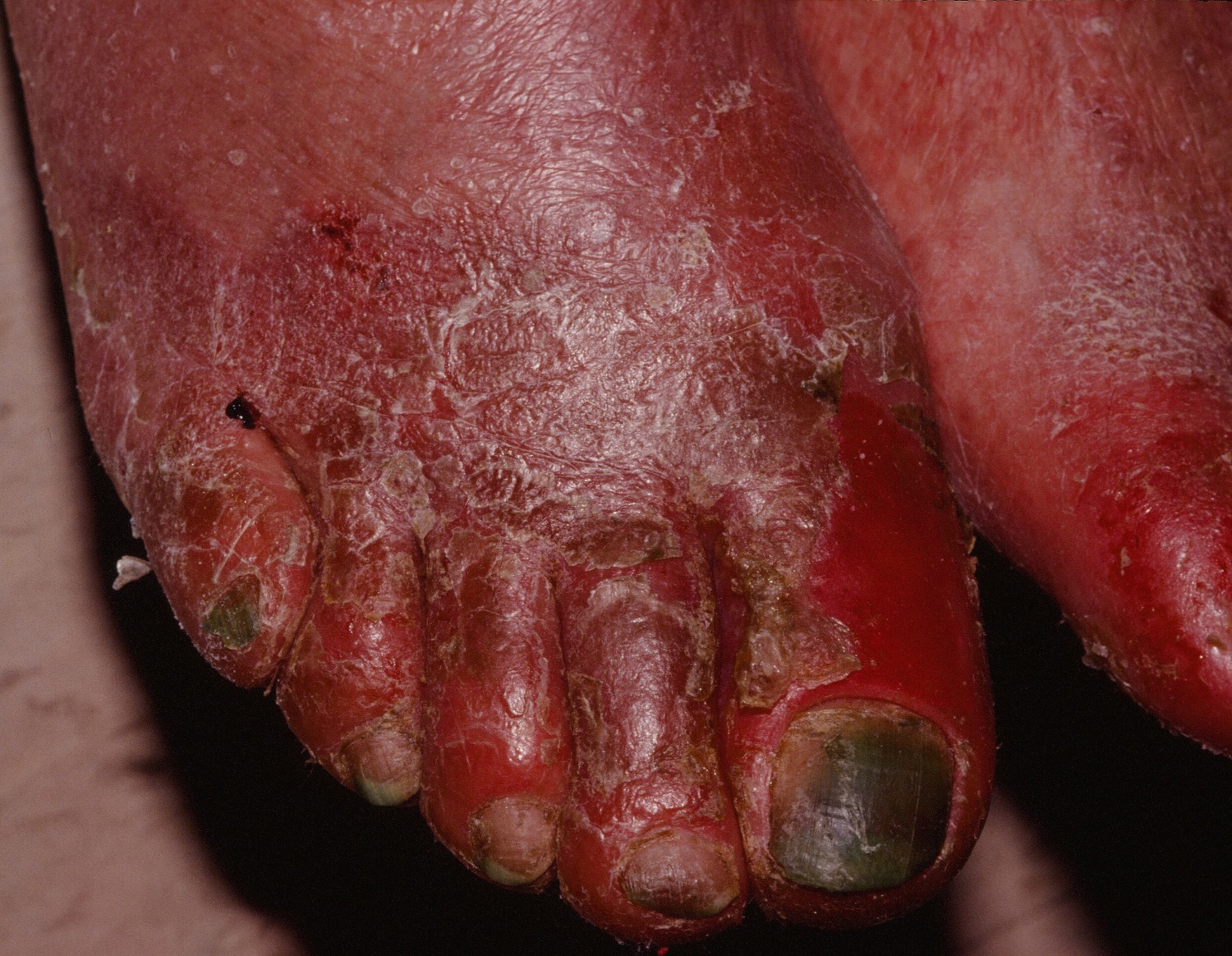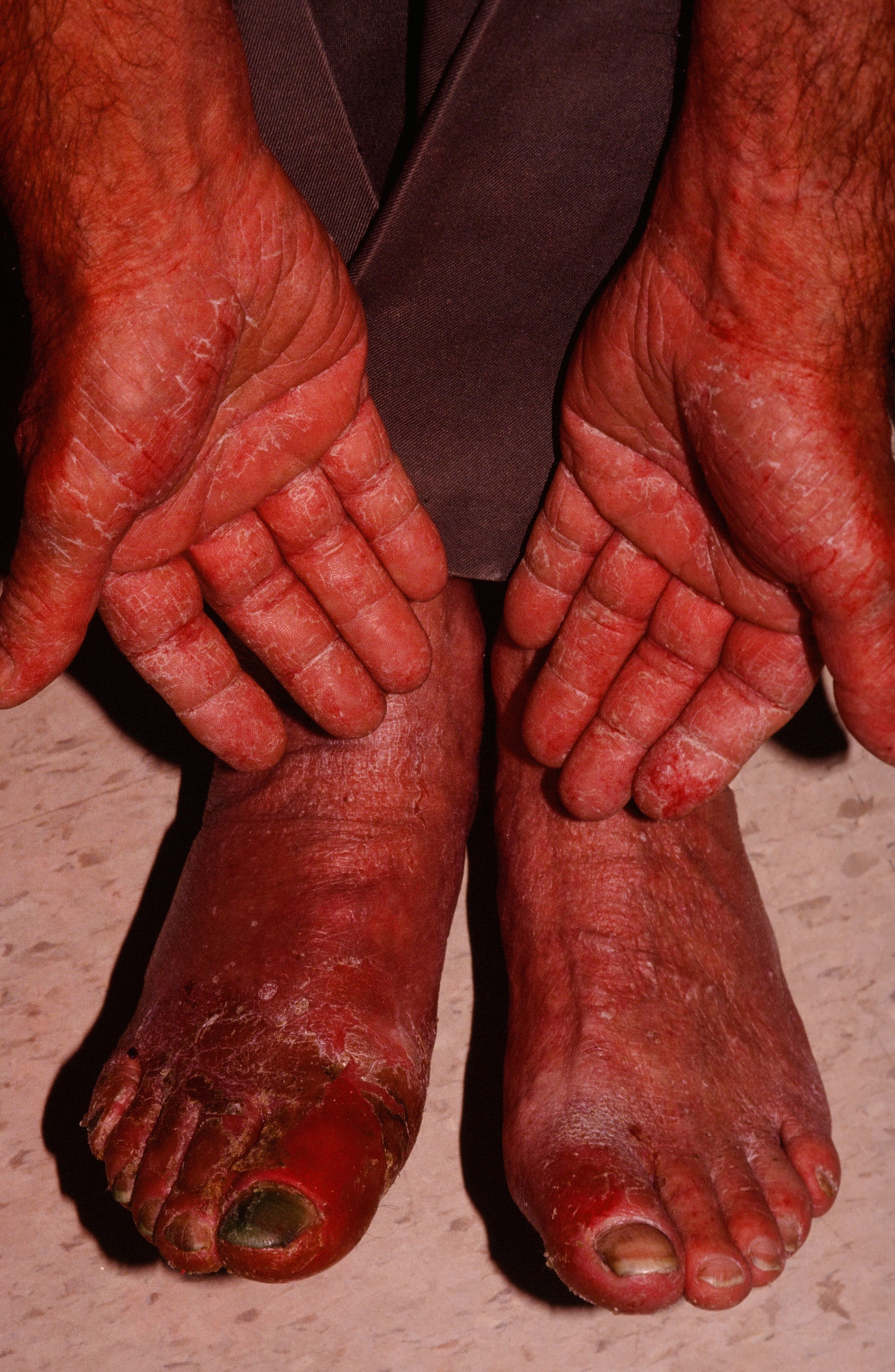
GRAM-NEGATIVE TOE WEB INFECTION
Gram-negative toe web infection (GNTWI) is an uncommon bacterial infection of the web spaces, usually precipitated the constant wearing of shoes.
- Males predominate with a ratio of 4:1.
- In a review of 123 cases, Pseudomonas aeruginosa was the prevailing pathogen, but E. coli, Proteus mirabilis, and Morganella morganii were also found. (Of note, gram-negative bacteria can be cultured in 10% of normal appearing web spaces.)
- Interdigital tinea commonly predisposes primarily by two mechanisms: 1) Damage to the stratum corneum facilitating bacterial invasion and 2) Secretion of penicillin and streptomycin-like antibacterial substances favoring colonization by gram-negative bacteria.
- Chronically wet feet is a risk factor. This is usually via the chronic wearing of shoes and the profession e.g., coal miners; or occasionally hyperhidrosis.
Clinical
Initially, the toe web becomes white and macerated. Later, wetness, inflammation, and odor develops. In the full-blown setting, the web spaces of all toes are eroded, malodorous, and inflamed. Green-tinted pus and/or even skin may be seen. The web spaces may fluoresce under Wood's light.


Gram negative toe web infection with Id Reaction.
RegionalDerm
Homepage | Who is Dr. White? | Privacy Policy | FAQs | Use of Images | Contact Dr. White
It is not the intention of RegionalDerm.com to provide specific medical advice, diagnosis or treatment. RegionalDerm.com only intends to provide users with information regarding various medical conditions for educational purposes and will not provide specific medical advice. Information on RegionalDerm.com is not intended as a substitute for seeking medical treatment and you should always seek the advice of a qualified healthcare provider for diagnosis and for answers to your individual questions. Information contained on RegionalDerm.com should never cause you to disregard professional medical advice or delay seeking treatment. If you live in the United States and believe you are having a medical emergency call 911 immediately.

